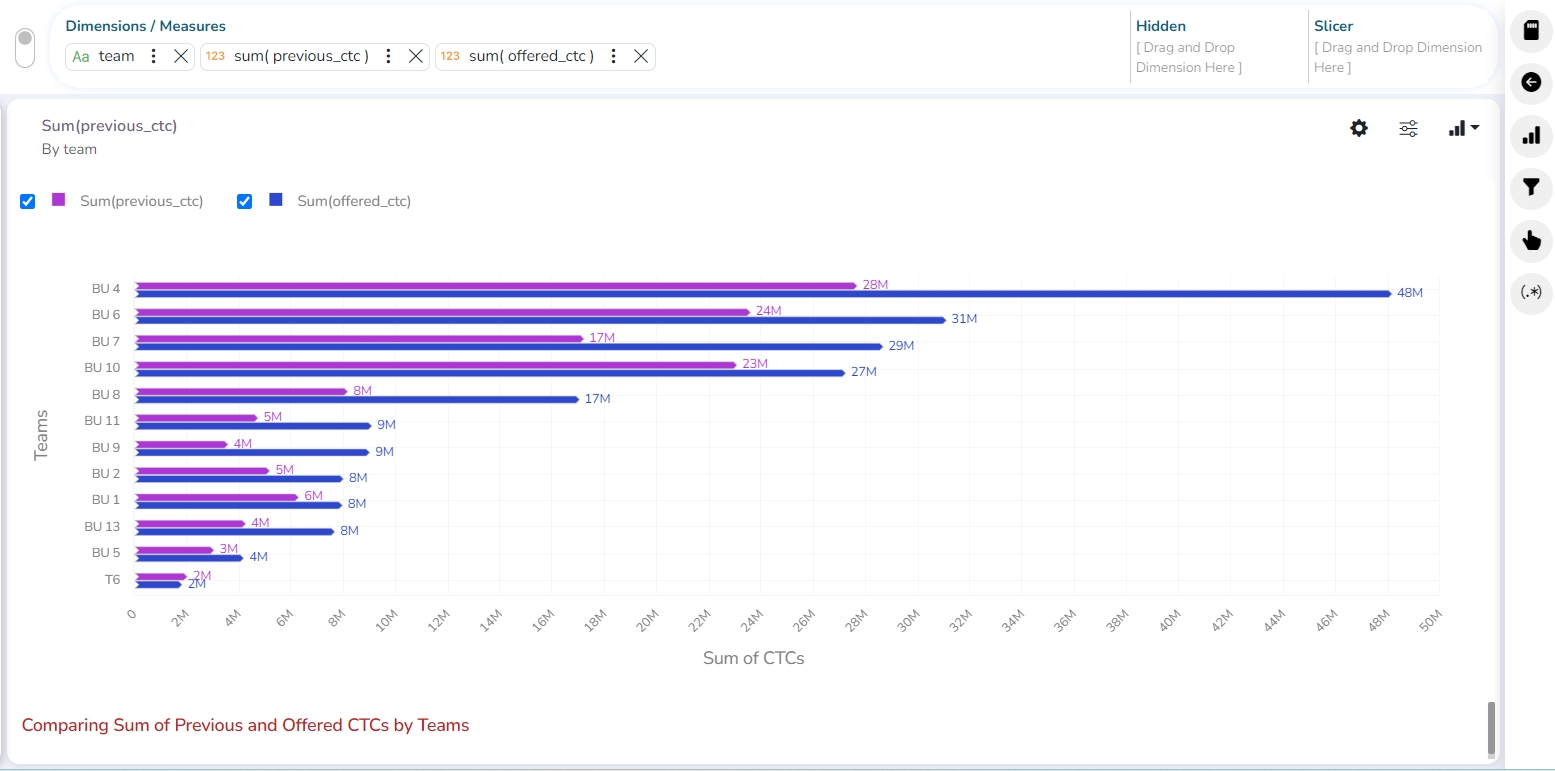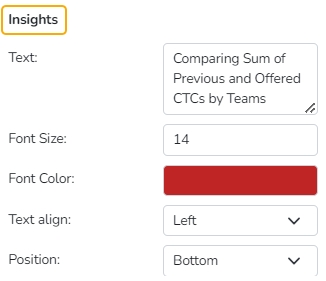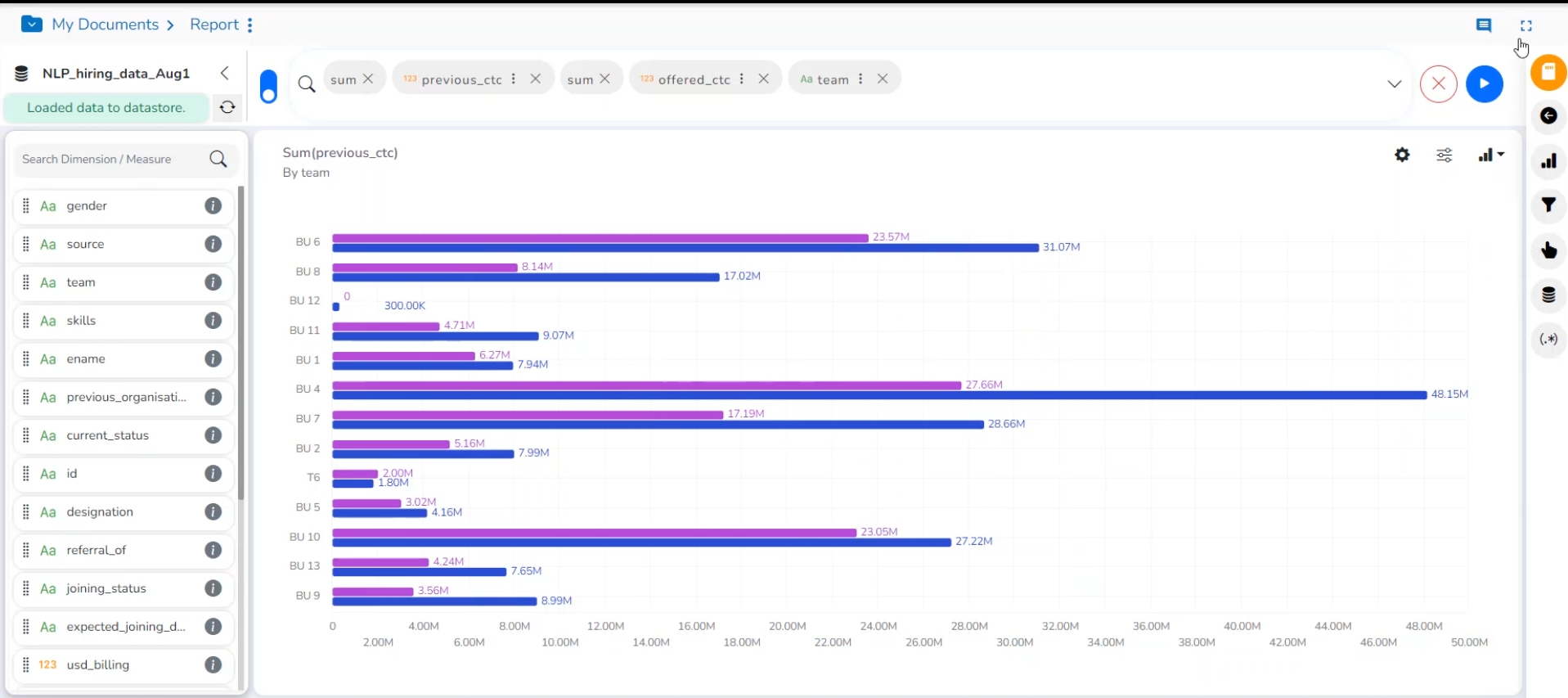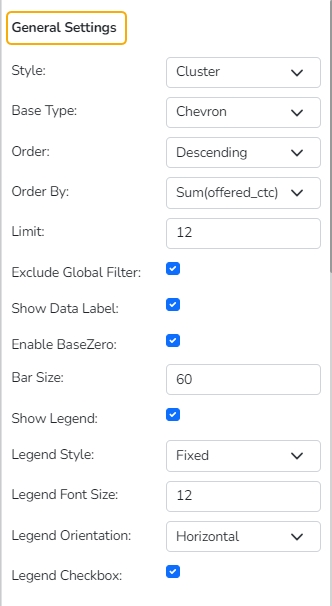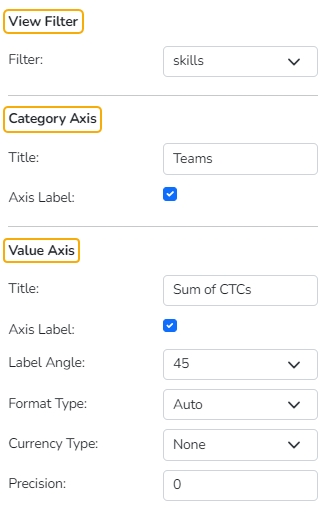
Bar Charts are useful for comparing classes, categories, or groups of data. They are one of the most commonly used chart types because they are simple to create and very easy to interpret.
Check out the illustration describing Bar chart properties.
The best situation to use a bar chart: When the data set is small, it would be more accessible to the end-user to interpret data. Observations can be performed over a period.
Examples:
Quarterly sales of an organization
The percentage of change in sales or revenue can be indicated
Variations of this chart:
Add color for quick insight: Displaying the bars with colors helps users pay immediate attention to the essential tasks.
Use bars side by side: Where comparison between multiple categories becomes easier instead of toggling between charts.
Style: Select a style to display the data (the provided choices for this field are Cluster, Stack, Stack Percentage, Stack Overlaid)
Base Type: Select a base type of option from the drop-down (the provided choices for this field are: Plain, Rectangle, Chevron)
Order: Select a sequence for displaying information using the drop-down
None
Ascending
Descending
Manual Sort (The users need to sort the dimensions by using the indicator signs manually)
By selecting an order (ascending or descending, the user needs to configure the following fields:
Order By- Select a value option from the drop-down menu to order the sequence of the data.
Limit- Set a number to display the requested data by this limit.
Exclude Global Filter: The view gets excluded from the Global Filter condition by putting a checkmark in the box.
Show Data Label: The data label is displayed using a checkmark in the given box.
Enable Base Zero: Base value gets presented from Zero using a checkmark in the given box.
Show Legend: Displays legend by turning on the radio button. After enabling ‘Show Legend,’ users need to select the following information:
Legend Style: Select one of the following options using the drop-down menu.
Fixed
Floating
The following fields appear when the selected Legend Style option is Fixed.
Legend Font Size: This option allows to increase or decrease the font size of the legend.
Legend Orientation: This option will be provided when the Show Legend option is enabled, and the selected Legend Style is Fixed. The users can choose an option from the given choices using the drop-down menu.
Vertical
Horizontal
Legend Checkbox: Enable this option with a checkmark to add the checkbox beside the Legend. It helps the users to customize the display of the data (The data for a legend value appears if a checkmark is used in the given checkbox. The data for the unchecked checkbox does not appear).
Filter: Select a filter condition using the drop-down menu.
Please Note: The selected View Filter option will be reflected to customize the View data after adding the View to the report.
Title: Provide a title for the axis.
Axis Label: Enable the category axis label by turning the radio button on.
Title: Provide a title for the Primary Value Axis.
Axis Label: Enable the Primary Value Axis label using the radio button.
Format Type: Select a desired format type from the drop-down menu (the provided options for this field are: None, Auto, Percent, Thousand, Lacs, Crore, Million, Billion, Trillion, Quadrillion).
Currency Type: Select a currency symbol to be displayed in the view (the provided options for this field are: None, Rupees, Euro, Pound, USD, Yen, Cent).
Precision: Set the after-decimal value (It displays up to 5 precision).
Text: Provide any information regarding the chart. If any digit or character is required to be highlighted, put it inside two asterisks. (E.g., *70%* or *skills*).
Font Size: Set/modify the Font Size of the Insights text.
Font Color: Select a Font color for the Insights Text.
Text align: There are three alignments to align the text.
Left
Right
Centre
Position: There are two options to position the text.
Bottom
Right

